Intro To Sailing (Lesson 1)
Welcome to Hatteras Community Sailing (HCS). HCS is a One Design Community Sailing Program centrally located on Hatteras Island on the Outer Banks of North Carolina.
Community Sailing Program
HCS is a US Sailing Community Sailing Program. We are a not for profit 501(3)c sailing program overseen by a local board of directors. We exist to expand the knowledge and access of sailing within our local and visitor community. HCS provides sailing instruction and competition to local and visiting youth and adults on Hatteras Island, NC. We inspire independence, seamanship, and respect for nature through lessons, classes, and camps that teach sailing, water safety, boat safety, and boat maintenance.
We organize local and regional sailing events and competitions to promote the sport. HCS uses sailing as a foundation on which to grow community, skill, discipline, character, and self-confidence in local and visiting Hatteras Island youth and adults.
We are insured through US Sailing’s Gowrie Group Chubb Burgee Policy. All the boats, participants, activities and instructors that participate in our programming are insured whether we are on or off site.
Hatteras Sailing strategically selected a set of one design sailing boats for our fleet that would be appropriate for our sailing grounds. The HCS Sailing Fleet offers something for all ages and agility levels.
Hatteras Island is one of the most beautiful spans of our National Seashore. The HCS Sailing Center is centrally located on Hatteras Island within Buxton Harbor on the Pamlico Sound. The Pamlico Sound is an inland sound with shallow sandy bottom and shifting shoals and deep keel sailboats are not a great choice for our waters. From the sailing center, we can use Rollinson Channel to access the intracoastal waterway. Typical sustained wind speed ranges from 15-30 depending on the time of the year, and our prevailing wind direction is Southwest.
Given the conditions of our sailing ground, our leadership spent years learning and testing different sailboats in order to prove the concept of establishing a sailing school here on Hatteras Island within the Outer Banks of North Carolina. They have chosen the vessels we have so that we can offer the full range of sailing and sailing education one would expect from a world class yacht club. We also chose sailboats that visitors who come to the Outer Banks would be familiar with and would want to sail when they visit our beautiful island.
It takes so much more than just sailboats to be have a thriving Sailing Program
Sailing Programs require so much more than just some sailboats and water to function properly and thrive. Certified Instructors and skilled program managers are key, but there are also other team members and infrastructure items that go often unnoticed for a program to operate effectively:
- Boat ramps
- Safety boat RIBS
- Working bathrooms
- Summer Camp instructors
- Classroom space
- Large powerboats to function as committee boats for regattas
- Certified race committee members
- Inventory of PFDs
- Cranes to launch keelboats
If you are interested in becoming a certified sailor, an instructor, or race committee member, please let us know so we can schedule you into a class.
One Design
One Design sailing is a form of sailing where all the boats are virtually identical and an association of builders and boat owners create and maintain standards that a boat must meet to be a part of the class. This is great because if you learn on a popular class you will meet lots of other boats and communities with the same boat you learned to sail.
Typically the class rules include sail, boat, rig, and crew measurements including dimension, weight limits, and material specifications. All boats, rigging, and sails within a one design class should be identical regardless of the sailing club, regatta, or resort you are visiting when you choose to go sailing.
Whether you are racing or cruising, choosing a popular one design sailboat makes the operation, maintenance, and ownership of the boat easier and more budget friendly. For more information, visit US Sailing’s One Design Central
Sailboat Class
A particular one design sailing boat is “class”. At Hatteras Sailing, we offer the following classes of one design boats. As we grow our program, we would like to offer memberships to the particular sailboat classes such that a member of that HCS class would get checked out on the boats, borrow them from the club, and sail them or rent them “bareboat” without an instructor or captain.
- Optimist
- Club 420
- Hobie 18
- Flying Scot
- Melges 24
- Stiletto 27
Dinghy Sailing & Dinghies
HC Dinghies: Optimist, Club 420, and Flying Scot
Dinghy Sailing is athletic and sporty. Expect to get wet while sailing a dinghy. Your physical conditioning and agility must be high to enjoy sailing a dinghy. Typically dinghies are sailed solo or in teams of two. Youth sailing programs are focused on teaching youth to sail certain internationally standard dinghies. Learning to sail and balance a dinghy is one of the best ways to become an excellent big boat sailor. Dinghies are typically less than 20′ LOA and typically do not have a weighted keel. The sailor(s) body weight is used to balance the pressure on the sail. Capsizing a dinghy is expected and sailors learn to right the boat and keep on sailing as part of core sailing skills.

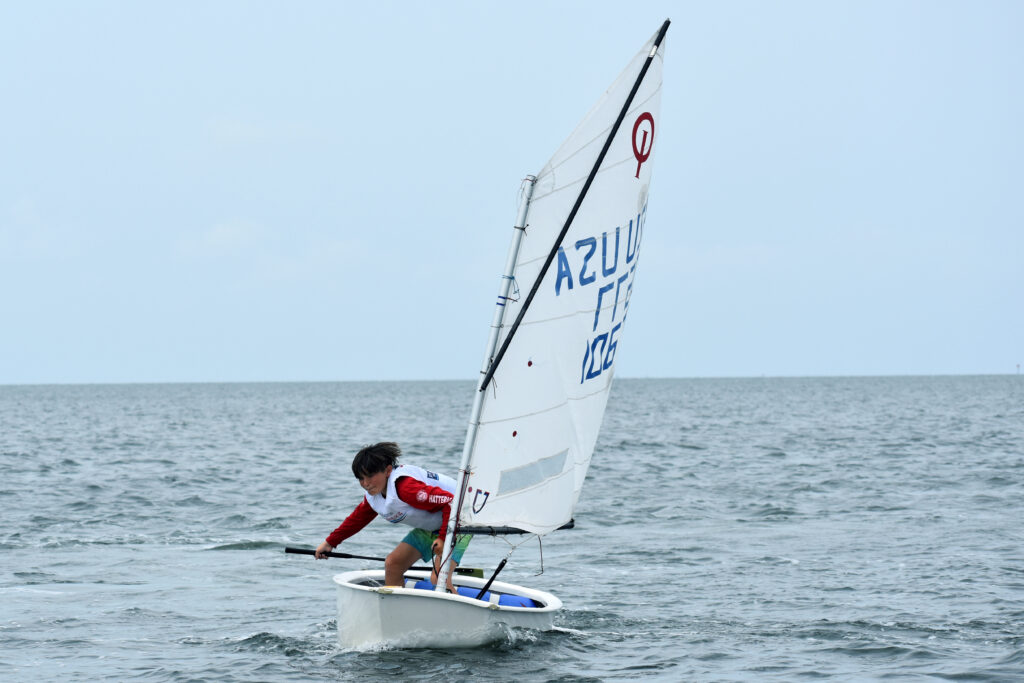
Catamarans
HCS Catamarans: Hobie Cat (16, 18) and Stiletto 27
A boat with two hulls wherein the distance between the hulls provides the balance of stability. As a catamaran’s sails fill and pressure increases, one of the hulls can rise up out of the water reducing the wetted surface area and therein providing faster sailing.

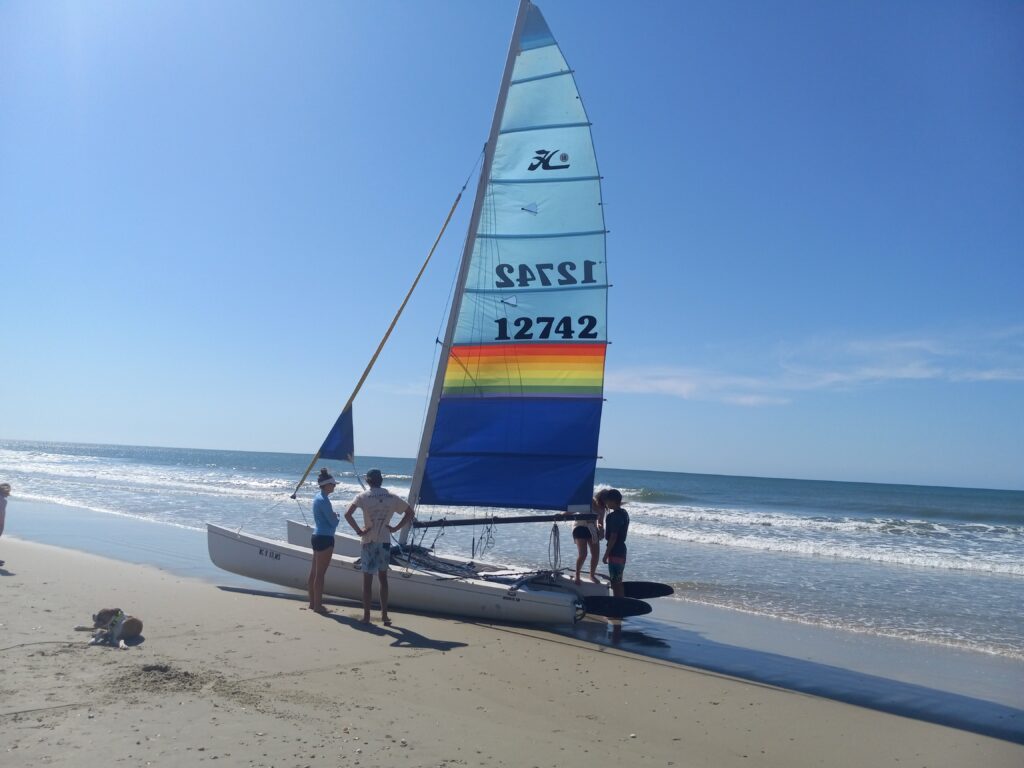
Basic Keelboat
HCS Basic Keelboats: Melges 24
A sailboat with one hull and a weighted keel. The heavy lead weight balances the pressure in the sail and keeps the boat upright. While a keelboat can “wipe out” in rare cases, typically the weight of the keel is going to keep the boat upright. Crews still need to move around the boat port to starboard and forward to aft to optimize the pointing ability and speed of the boat. Typically, basic keelboats are under 33 feet and meant to be daysailed recreationally or sailed for sport, racing in regattas.
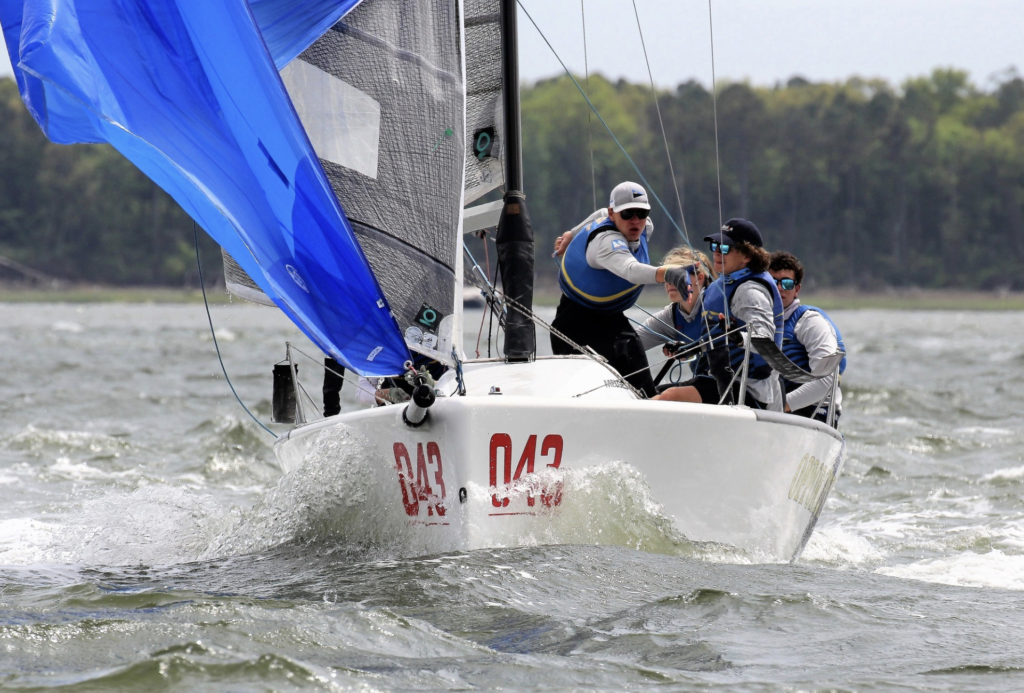
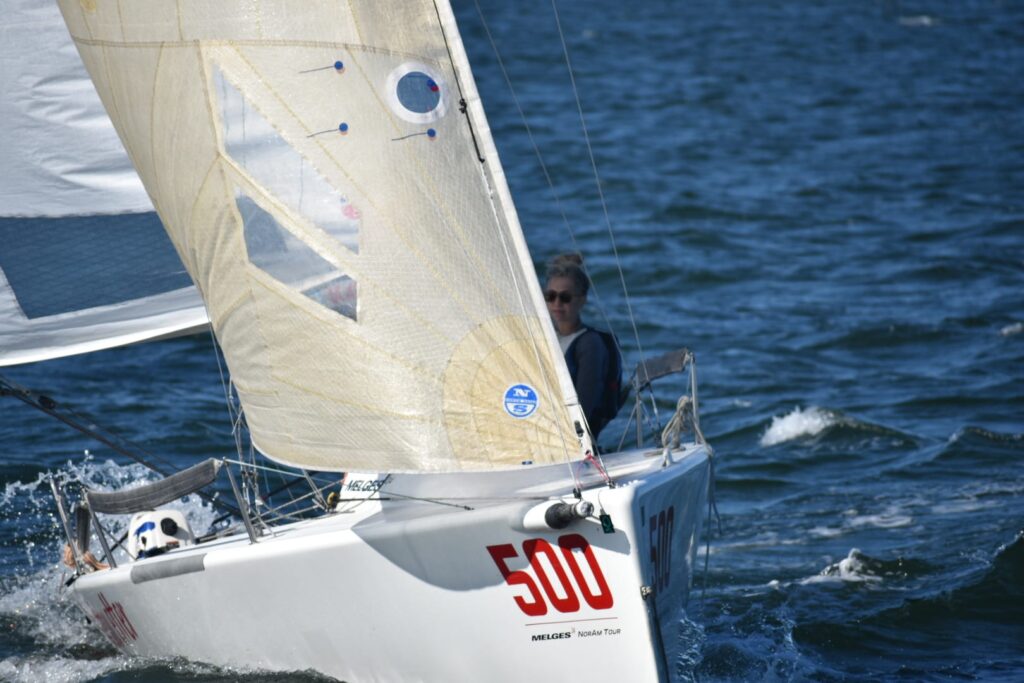
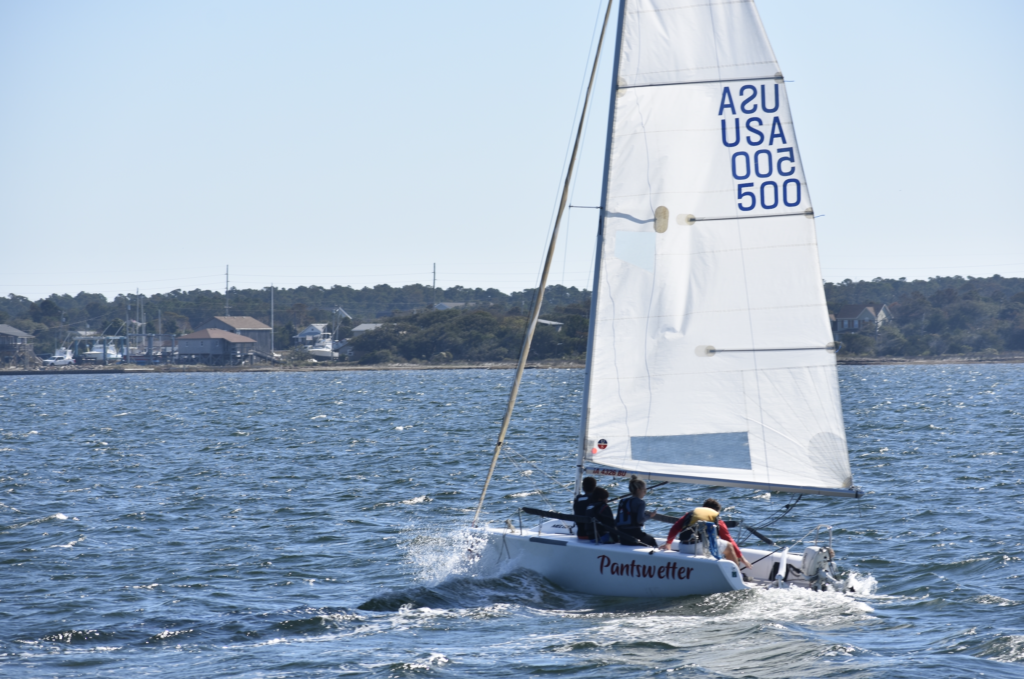
Cruising Liveaboard Keelboat
HCS Cruising Liveaboard Keelboat: Sabre 42
A sailboat with one hull, a heavy weighted lead keel, and living quarters down below. Cruising keelboats are typically ocean or near coastal rated and can handle stronger winds and heavier sea conditions than a basic keelboat. Liveaboard cruising keelboats stay in the water, are usually bottom painted, and often have deep keels. The Sabre 425 at HCS, ‘Legacy’, is a centerboard boat that drafts just 5′ with the board up. The Sabre 42 is a perfect boat for teaching Cruising Skills and we can offer US Sailing Certifications on this boat including:
- Basic Cruising
- Bareboat Cruising
- Coastal Passagemaking
- Celestial Navigation
When keelboats race, they are handicapped typically through a system called the Performance Handicap Rating Fleet (PHRF). The Sabre 425CB is rated 108 for racing, and is well respected as a training boat for ocean racing. HCS could participate in the CORA Series or the Newport To Bermuda race.

